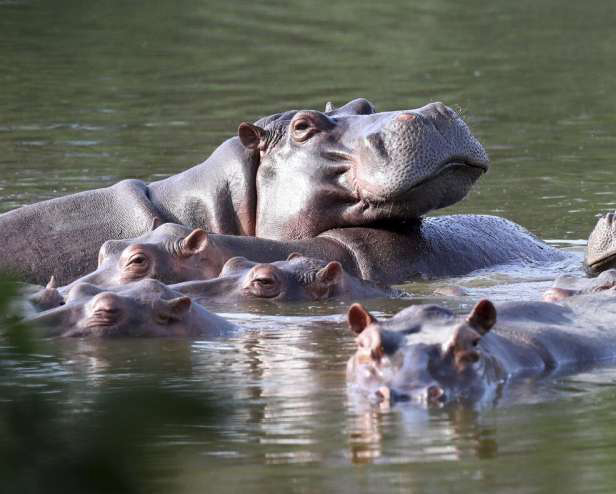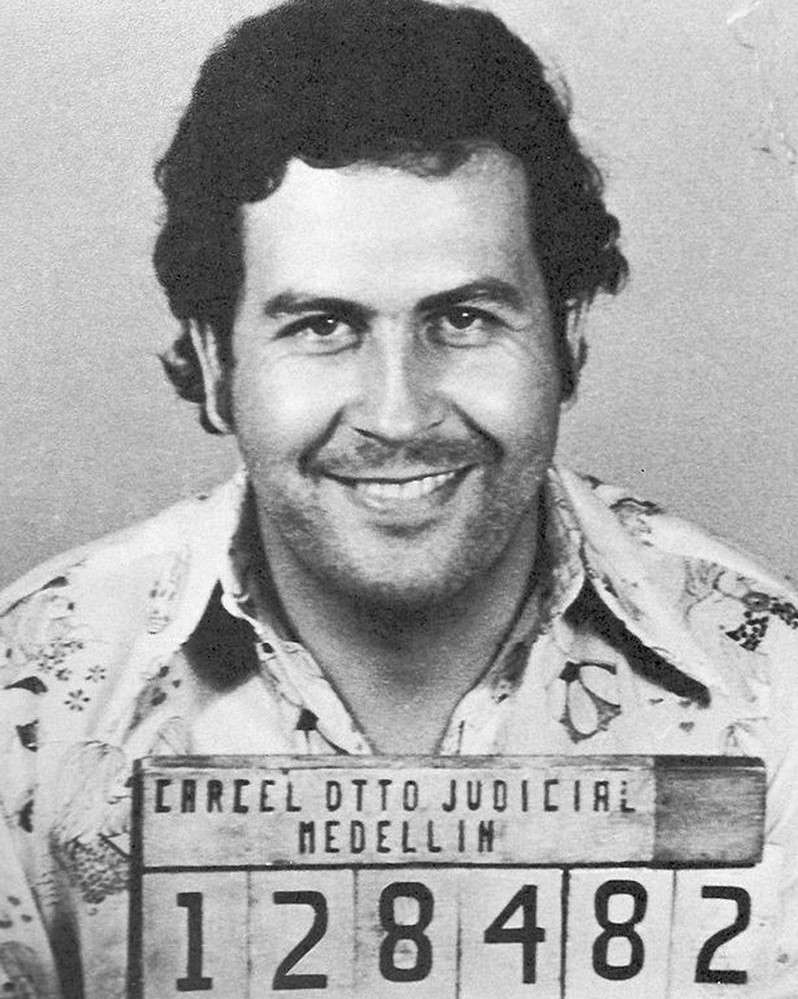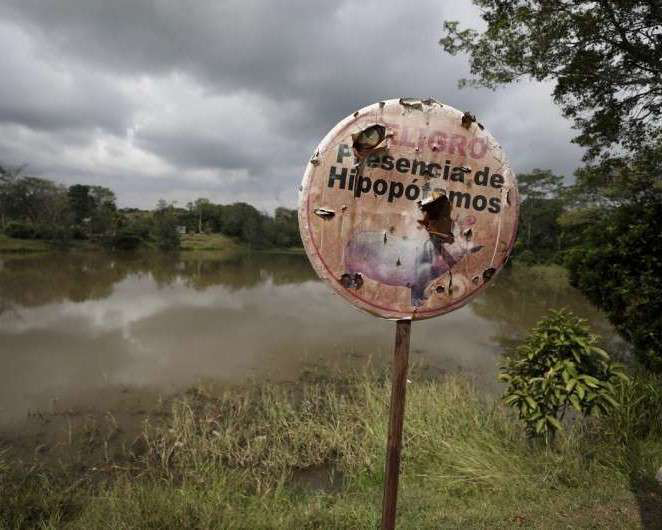
Hippos in the lake at Hacienda Napoles park
The drug lord Pablo Escobar and his Medellin Drug Cartel is long dead, but one of his possessions has again become a major concern for numerous people. In the late 1900s, the Columbian drug lord Pablo Escobar was incredibly known for his influence in the crime world, but he was also in talks when he kept 4 hippopotamuses, 3 females and 1 male, in a private city farm at his residence in Hacienda in Columbia. Male hippos are generally 11.5 feet long, 5 feet tall, and weigh around 3.5 tons. In terms of size, males are larger than females, weighing around 30% more than female hippos. This lavish farm of Pablo was home to kangaroos, elephants, giraffes and many other exotic animals, which was almost a private zoo of illegally imported animals that was the greatest showcase of the drug lord as he ruled over the cocaine trade in the region. Hippos are not native to Colombia and they were imported in the 1980s by Pablo Escobar. But after Pablo’s death in 1994, they were left in his place, and they got stuck at the estate due to the high expenses and issues related to transporting these huge animals which weigh around 3 tons, and the increasing violence in the area was a similarly massive problem. Thus, the hippos thrived in Medellin and Colombia’s capital, Bogota, and unlike in their native African regions, they have no predators in Columbia. The massive size, and comfortable aquatic life protects hippos from predators. However, human being has killed hippos for many reasons including for meat, ivory and for their aggressive nature sometimes.
Hippos were scattered across the entire world in ancient times, but now they largely reside in eastern and central part of South Africa. By 2007, the 4 hippos which were bought by Pablo Escobar multiplied to 16 and now these hippos have spread out from their initial habitat, some 100 miles east of the city of Medellin, in the Antioquia department, dispersing around the Magdalena river basin as their population continues to grow steadily. Some hippos remain at Escobar’s Hacienda, which is now a theme park. However now a group of scientists are warning that these hippos pose a major threat to the area’s biodiversity and could also lead to many deadly encounters between these massive beasts and humans.

Pablo Escobar
Pablo Escobar was one of the most controversial personalities of that time, and now his hippos have also become a source of endless controversaries. The population of hippos is constantly increasing, and the US government is trying to control the reproduction process. In the last 8 years, the number of hippos has increased from 35 to somewhere around 65 to 80. Scientists are now concerned that these hippos will have a major threat to the bio diversity of this area, and according to them, the number of hippos could reach around 1,500 by the year 2035 if the necessary action are not taken. Some scientists believe that the hippos need to be killed. A study was done by Nataly Castelblanco-Martinez, who is an ecologist at the University of Quintana Roo in Mexico and lead author of this group’s research. The group of scientists started working on the hippo population forecast in 2020 after a hippo injured a local farmer, and this study was published in the journal Biological Conservation in January 2021. The continuous increase in the population can similarly harm the native Antillean Manatees. Another research by the University of California, San Diego, found the hippos are chasing quality water in which they can spend much of their time. There are debates going on across the world and numerous people are criticizing the idea of killing hippos. The locals have accepted the hippos as their own, also for the tourism purpose. Some wildlife experts speculate that the government’s efforts to keep down the numbers by sterilizing some hippos is not enough. They believe that sterilizing some hippos is not enough to control the increasing population. A regional environmental agency’s researcher David Echeverri Lopez agreed that killing some of the hippos would be the best solution, but with the magnetic fame of these hippos, the government probably won’t fully allow it. The government has also imposed a ban on hunting hippos.

A hippo warning sign at Doral Lagoon, Columbia
The last option that the scientists have is to sterilize the hippos. It is very complex and expensive process. The hippos must be tricked into entering a huge metal corral to be sedated. The team of wildlife experts must be spent about 3 hours cutting through the thick skin of the hippos and then try to find its reproductive organs, which is not an easy and fast process. The locals also keep their eyes on the experts who are attending the hippos, because the locals feel quite protected towards the hippos. In the regional environmental agency, a single procedure of sterilizing hippos cost around $8,500. Some documentary productions have helped and sponsored the sterilization process in 2019.
Till now, the agency has sterilized 10 hippos and relocated 4 infant hippos to Colombian zoos. However, this work was stopped in 2020 due to the novel coronavirus pandemic. Now the agency is hoping that they will carry a type of chemical sterilization that has worked on pigs. They also tried to send the hippos to other nations’ interested zoos but the officials have denied the plan. Ecologist Nataly Castleblanco-Martinez is being called cruel and a murderer in the region, but she claims that she can understand the emotions of people related to the killings of hippos, but she also believes that the future biodiversity of Columbia should not be threatened by the current warm feelings towards hippos, which can convert into an invasive species disbalancing the other significant elements of the nature.
_____________________
Reference:
- www.bbc.com
- www.nationalgeographic.com
- www.phys.org
